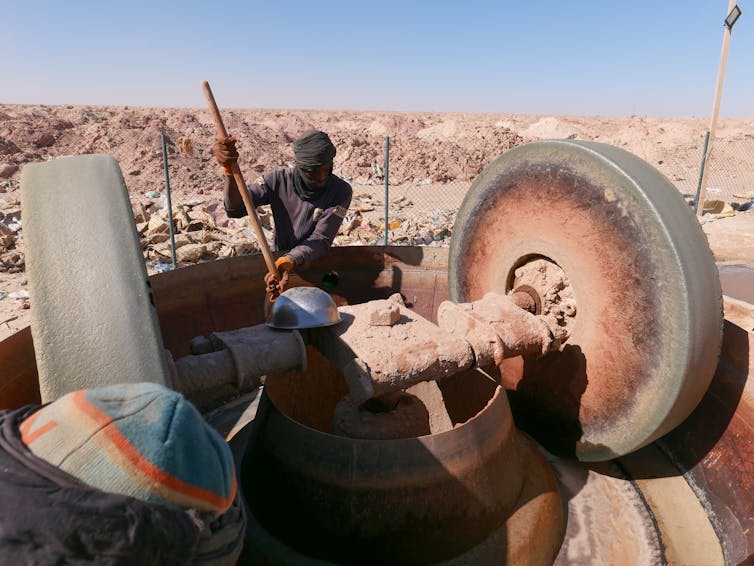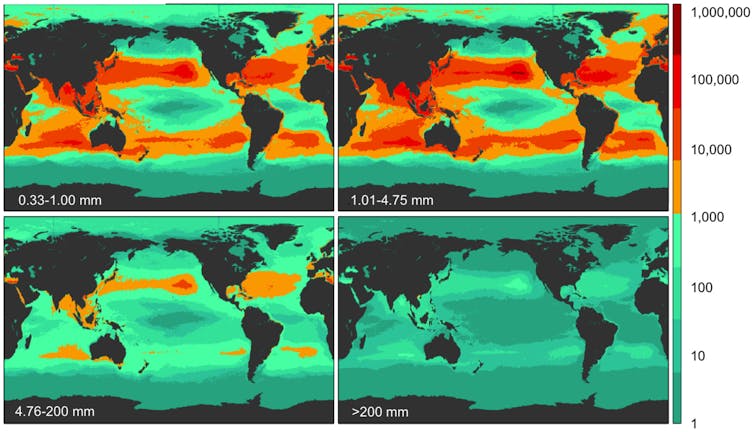
Juan Fernández fur seals are so poorly understood that they were considered extinct for nearly a century before a remnant population which had managed to evade generations of hunters was rediscovered in the 1960s.
Their mysterious nature owes a lot to their seclusion on an archipelago of the same name 600km off the Chilean coast. These remote islands are situated in a protected national park – the last place you might expect to find animals exposed to high levels of pollution. But samples I collected and analysed with colleagues tell us something different.
Our most recent study analysed fur seal poo and found concentrations of cadmium and mercury that were among the highest reported for any mammal worldwide. This species is ingesting exceptionally high concentrations of these toxic heavy metals through its diet, but how they enter the food chain proved to be more complicated than we anticipated.
By studying these marine mammals, scientists can discover how polluted the wider environment is. Better yet, we may learn a trick or two from them on surviving amid pollution.
Where are the heavy metals coming from?
Some metals, such as zinc and iron, are essential micronutrients which we’re encouraged to include in our diet. This is not the case with mercury and cadmium. Mad Hatter’s disease is a neurological disorder associated with mercury intoxication, while Itai-itai disease, which translates from the Japanese as “it hurts it hurts”, is a condition causing severe bone pain and weakening resulting from chronic cadmium poisoning that affected people working in contaminated rice fields in Toyama prefecture, Japan. These heavy metals are highly toxic even in small amounts, and they have few known biological uses.
Heavy metals occur naturally in the Earth’s crust and are emitted by volcanic eruptions or as a result of rocks being worn down by the weather. They’re also produced during mining, waste incineration and steelmaking. With the Juan Fernández Islands being so far from any major industries, we were initially perplexed by the seemingly toxic diet of these fur seals.

But the archipelago is located on the edge of a rotating current known as the South Pacific subtropical gyre which has gathered a colossal amount of ocean plastic. It is estimated that the plastic patch is bigger than India.
Unfortunately, Juan Fernández fur seal mothers must travel huge distances through this plastic cloud to hunt the nutrient-rich prey they need to carry on their pregnancies and make enough fatty milk for their pups. Evidence shows plastic debris can absorb toxins, including cadmium. So were the fur seals accidentally ingesting plastic or eating animals that had? The answer was more complicated.
Phytoplankton, or algae, are microscopic organisms similar to plants on land in that they contain chlorophyll and synthesise food from sunlight. Algae use micronutrients such as zinc to carry out their metabolism, but some parts of the ocean, including gyres, tend to have low concentrations. Studies have shown that phytoplankton in these regions have evolved to use cadmium instead: the only known biological process in which cadmium is useful.

Tiny, microscopic animals called zooplankton eat the cadmium-contaminated algae which are then eaten by fish and larger animals, which eventually end up in the bellies of octopus and squid, which are among the fur seal’s favourite food. These molluscs can accumulate large quantities of heavy metals in their kidneys and, especially, in an organ known as the hepatopancreas. Unlike humans, who largely only eat the tentacles, fur seals consume the whole prey, including the heavy metal-rich organs. So it may be that an evolutionary adaptation by phytoplankton has increased the risk of cadmium exposure in animals higher up the food chain.
A new mystery
Since cadmium severely damages the skeletons of mammals including humans, we wanted to see, after finding such vast quantities of cadmium in fur seal poo, if this heavy metal was being absorbed into their bones.
As expected, Juan Fernández fur seal skeletons were loaded with cadmium. But, to our surprise, we could not find any other mineral changes which would be expected in an animal suffering from cadmium poisoning. This suggests this species has somehow adapted to withstand the toxic heavy metal.
If that is the case, it may indicate that Juan Fernández fur seals have been exposed to natural sources of cadmium for thousands of years. To understand how, we must find a way to differentiate natural from man-made sources.
The reward for doing so may be great. There is sure to be much to learn from the resilience of this enigmatic species, which overcame extinction and still manages to thrive in a world where pollution has flooded even the most remote corners.

Don’t have time to read about climate change as much as you’d like?
Get a weekly roundup in your inbox instead. Every Wednesday, The Conversation’s environment editor writes Imagine, a short email that goes a little deeper into just one climate issue. Join the 10,000+ readers who’ve subscribed so far.
Constanza Toro Valdivieso is affiliated with Fundación Endémica, Chile.
This article was originally published on The Conversation. Read the original article.







